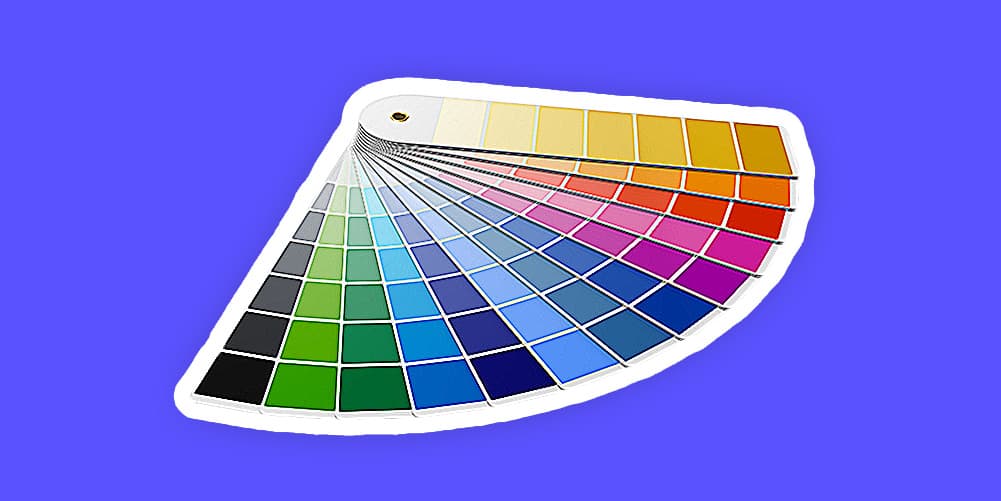
The Complete Guide to Starting a Subscription-Based Graphic Design Service
The subscription-based graphic design service is a model that allows designers or graphic design agencies to offer
their services on an ongoing basis, rather than project by project.
This guide will cover how to start your
own on-demand design service.
Why should you start a subscription-based graphic design service?
The biggest problem with traditional freelance or agency work is the lack of predictability: You might feel overwhelmed with clients one month, and then a month later have a down period.
One way to solve this: Package your services and offer them on a monthly basis. This will generate recurring revenue
and create more predictability for your business.
In addition, productizing your services and selling them in
form of packages is easier to sell: No more proposals or scope creep, your clients will immediately know what they
get. This saves a lot of time and speeds up the sales process of your services.
Here are the pros and cons of
starting a subscription-based design service:
Pros:
1. Recurring revenue
By creating packages that your clients pay on a monthly basis, you can estimate your future revenue and make long term decisions for your business, such as hiring staff to help you with your business or investing in marketing.
2. Easier to sell
Unlike proposals which require a lot of changes and back and forth, packaging your services is easier to sell. Selling your services in form of packages creates a well defined scope of service, makes the decision process easier for customers, and speeds up sales.
3. Get paid upfront
This is another big one: No more chasing invoices. Clients pay your one
off or subscription services upfront.
Cons:
1. Lots of competition
Design is a competitive industry. However, this also means there is a high demand for such type of service. While
design is competitive, you can differentiate yourself and your offerings to stand out from the competition.
2. Potentially high churn
The problem with this model is that clients might not need your
services on a month-to-month basis. You might experience some cancellation and high churn. It's thus key to target
the right type of clients that need design services on a long-term basis to reduce churn and try to get them to
commit to half yearly or yearly plans.
3. Design is subjective
Lastly, design is subjective. Every client taste is different. Empowering your clients to communicate their needs clearly with you, offering tutorials on how to submit requests, and asking your clients to upload their branding guidelines is a great way to solve this.
What are some examples of subscription-based design services?
GetAds

GetAds is a done-for-you design service that specializes in creating ad
banner design.
They focus on a simple problem: Hiring designers for a simple job such as getting banner designs takes a lot of time,
so they created an on-demand service to solve this.
Hatchly
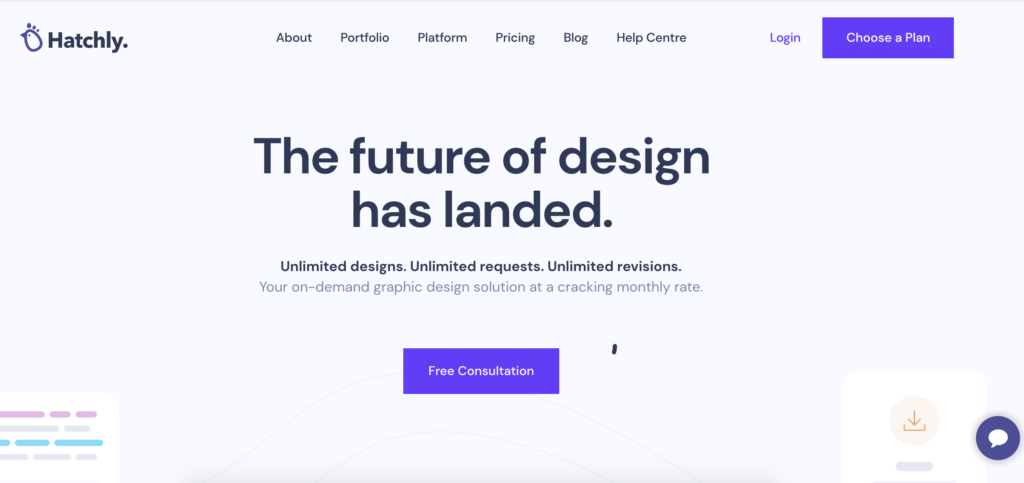
Hatchly is an on-demand graphic design service based in the
UK.
They focus mostly on UK businesses that need any kind of graphic design task done.
DarkRoast
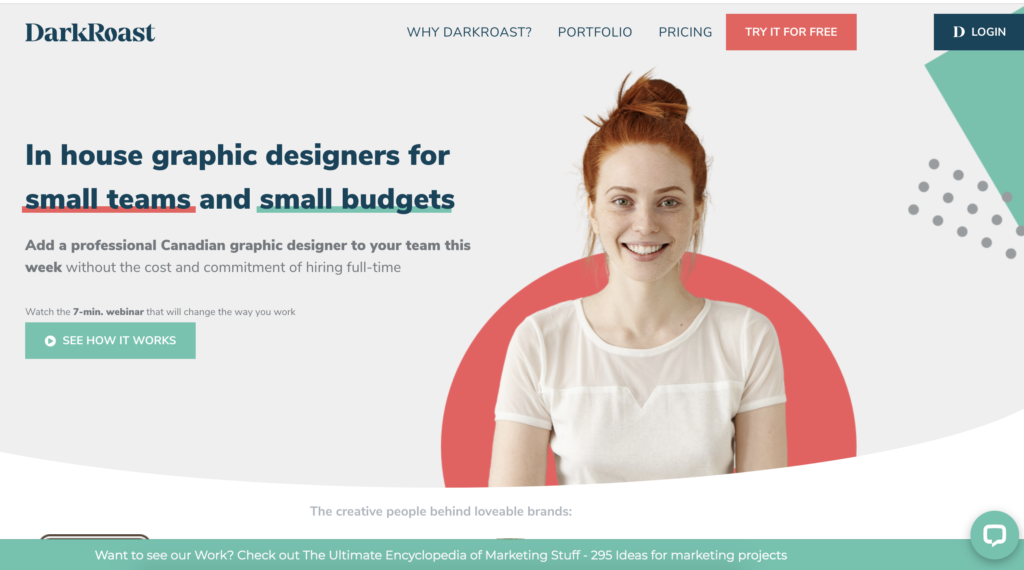
DarkRoast is quite similar to Hatchly, but they focus on the Canadian
market, and on "adding a professional graphic deisgner to your team" which is more like an 'designer on demand'
rather than 'design on demand'
24slides
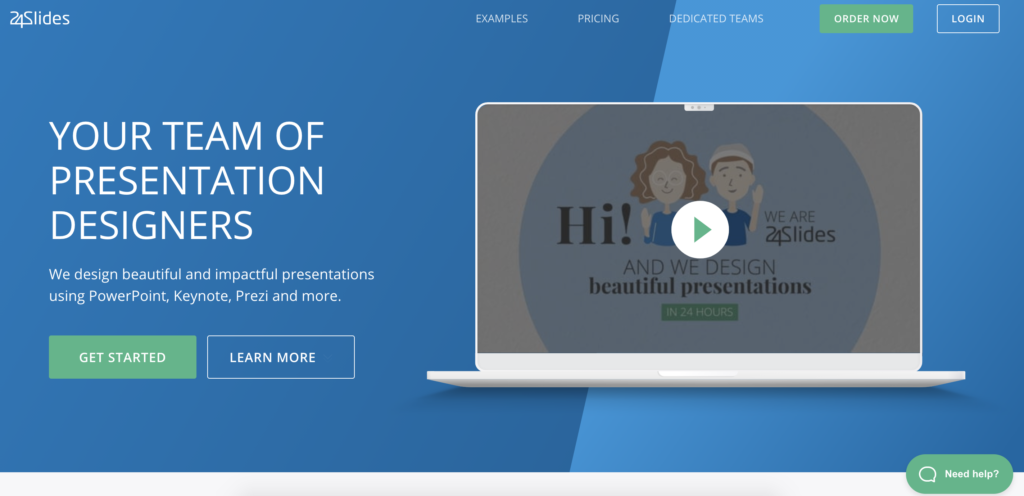
24Slides focuses mostly on one type of design: Powerpoint presentations. They
have different pricing models (per slide, credits) as well as dedicated teams for bigger companies.
PhotoLogo
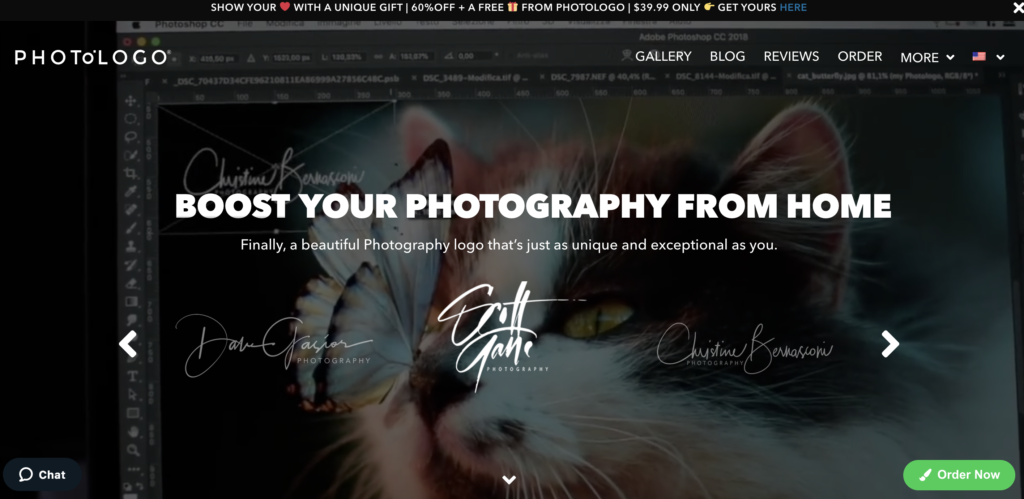
PhotoLogo also niched on one type of service and industry: Logos for
photographers.
How to start a subscription-based design service:
Convinced that this is the right model to offer your design services? Let's get started!
1. Find your niche
Graphic design is a very competitive industry and you need to find ways to stand out from the competition.
Let's take an example.
Say you provide graphic design for gyms and fitness instructors for a flat monthly fee. Your portfolio will be full of case studies of work you did for such companies. When approaching a gym and trying to sell your services, you can position yourself as 'The design solution for gyms and fitness instructors' and show them the work and results you got for your clients. Compared to other generalist design services, this will make you stand out from them.
This is why finding a niche is so important.
How to find a niche for your agency
There are different ways to niche down your agency:
a) Targeting (Enterprise, small businesses, startups, individuals)
b) Services (Graphic design, UI, banner design)
c) Business model (Dedicated designer, shared designer, pay
per task, ...)
d) Geography (UK market, Spanish speaking market, etc)
Let's take an
example.
Hatchly is an on-demand design for UK small businesses. They decided to niche down and offer their
services mostly to the the UK market. For UK small businesses, Hatchly feels more approachable, they are in the same
timezone, and probably also worked with other known UK companies. All in all, they have a competitive advantage over
other businesses that are not niched down.
How to test the niche of your agency
The best way is to test your niche is to talk to your potential clients and ask for feedback.
For example,
asking for feedback or doing cold outreach is a great way to test if your value proposition resonates with your
target niche.
Let's take an example.
Say you decide to start a "Graphic design service for french
startups"
Join all the French startups Facebook groups, make a list of French startups on Angel List
of and other startup directories and connect with the founders on Twitter and LinkedIn.
Here's an example of
message:
"Hey I am looking for feedback on my new design service, what do you think of this pricing model and which type
of design request do you usually need on a monthly basis for your startup?"
Don't be spammy (no need
to add the link to your site), you can also add a few examples of your work along the message. The key isn't to
generate sales at this point but trying to see if the problem you're solving appeals to that niche.
What makes a good niche for your agency?
A good niche is:
a) Big enough (Are they large enough so that you can build a business the size you want?)
b) Reachable (Can you
find them via cold outreach? Content marketing? Advertising?)
c) Have a need for your services and money to
purchase it
2. Create a marketing site
Second step, create your marketing site. The goal of your site is to explain what you do, help visitors qualify
(or disqualify) themselves, and convert them into potential clients for your service.
You can use Wordpress
or website builders such as Dorik or Umso which
are easy to use tools.
Here are the basics you need on your website:
- Tagline: What you do, your value proposition
- Customers: Who you are targeting
- Service : What you offer, how it works
- Resources: Case studies
- Samples of your work
- Pricing
- Call to action: Book a call/demo, get started
Here is some inspiration of websites for graphic design service.
3. Create case studies and resources
Next step: Create case studies.
Case studies will help build trust, and you can also use them in your
outreach.
Don't have case studies? Either ask your designers if they can make a case study based on their
previous work or ask them to create some mockups / redesigns. Here's a case study mockup from
Dribbble.
You could also create a 'Before/After' from 24slides:
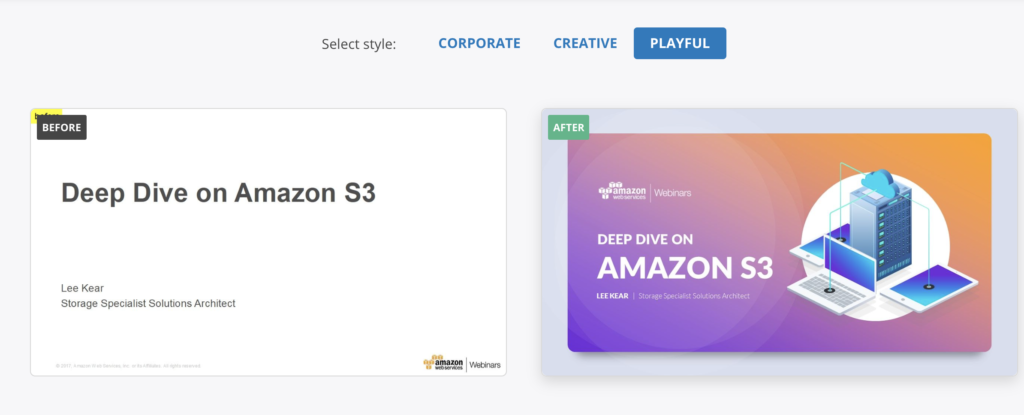
Finally, next to case studies you can also create some resources. A design guide, an illustration gallery or
templates. Anything that helps you grow your email list and turn those email subscribers into paying
clients.
Here's an example again from Hatchly:

4. Package your services and set expectations
Once you've got your website set up, create packages. Decide what you want to offer, and at which price.
How to price the services of your graphic design service?
One way to start with pricing your services is to look at the competitive landscape and at your expected costs
(designer costs, marketing costs) and decide which margin you are comfortable with.
For example, if a
designer costs you $2000/month and can handle 6 clients at a time, you'd have to sell your services at roughly
$670/month to make a 50% profit margin.
However, some clients might cancel. So you will have to estimate
churn as well.
Take control of your costs, look at the market prices, and price your services accordingly.
How to set expectations for your graphic design service
The key to sell your service in form of packages: Aligned expectations.
Since you are selling your services in the form of packages, setting your expectations upfront will prevent issues in
the future.
What is the turnaround? How many revisions are they allowed? Is there a money-back guarantee or a
free trial? Can they cancel your service anytime?
Clear expectations will ensure customers will be perfectly
aware upfront of the "product" they are purchasing and will be much more satisfied.
5. Find your first clients
One way to get the first clients for your design service is to offer a free trial or "Pilot Program".
You can create free trials on ManyRequests. Here's an example from 55Knots, an on-demand design service in
Australia:
An other idea, is to offer a discount on the first month.
Finally, you can also offer
single design tasks so that clients can see if they like your service. To reduce risk, you can offer unlimited
revisions (or at least a few) as well as a money-back guarantee.
How to find the first clients of your design service
So what are the best ways to find clients for your design service?
a) Cold outreach
Cold outreach is a
great way to find clients, because you can directly reach out to them. Whether you decide to do it via LinkedIn
Outreach or email, make sure your emails are very personalized.
Here is our guide on LinkedIn outreach.
b) Personal branding and networking
A second way to get
your first clients is to talk about your journey, or build in public. Sharing your learnings, milestones, and wins
(and failures) is a great way to do PR for online business entrepreneurs. You can build rapport and get new clients
and referrals that way.
Here's an example from Indie Hackers
And another one from Twitter:
c)
Content
Finally, creating content and building your email newsletter is a great way to get clients. Create
ebooks, case studies, and blog posts to rank on Google for terms related to your service.
6. Hire designers and project managers
Once you've got your first clients (or before, if you're not a designer0 you can start thinking about hiring a
team.
There are two roles I would hire to run an on-demand design service:
a) Designers
They
will be doing the day to day work of handling the client design requests and will also communicate with
clients.
b) Project managers
They oversee and assign tasks, and they can also help in interviewing and
onboarding new designers to your team.
Build a team is hard. I have written a guide on this which I hope will
help you out.
7. Build and document systems to deliver your services
A very important step to build a successful subscription-based design service: Systems.
Think of systems as
the "operating system" of your company. They tell all the moving parts (your team, your marketing, your customer
support) what are the steps to do their job.
Without system, your team will rely on you for their questions
and you'll always be working inside the business instead of building a well oiled machine that can run without you.
So, build systems!
Here are some examples of systems you can build for your service:
- How to onboarding new customers
- How to handle refunds and cancellations
- How to deliver files (which format?)
- How to communicate with customers
- etc etc.
Good systems will simply allow you to free yourself from the business. Once you've written a process, just continue to improve it instead of putting out fires.
How to build systems for your design service
You can use tools such as Notion (more on that below) or Google Docs to document systems. You can also use
ManyRequests to ensure all design assets are in the cloud so that your designers and your clients can access their
files at anytime.
When building a process, keep it simple. You can use a few key steps, screenshots or Loom
recordings.
8. Set up tools to run your business
Here are some software you can use to manage your subscription-based service:
ManyRequests
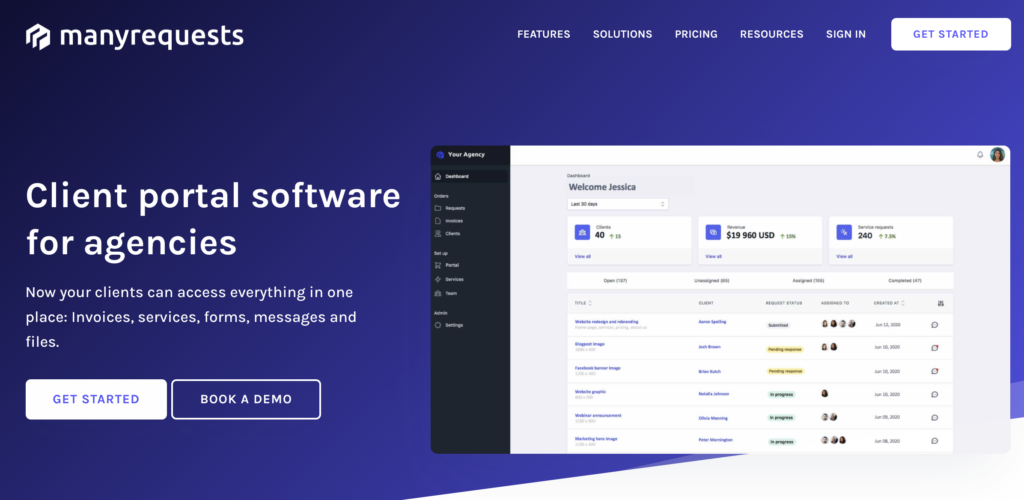
We built ManyRequests specifically for subscription-based services. The software will allow you to run your entire
business: From creating checkout forms to bill your clients, to having a fully customizable client portal where your
clients can submit tasks and files, and a project management tool where you can assign/auto-assign tasks to your
designers and project managers and communicate with your client. There are also a few cool features such as Zapier
integration, live chat integrations, as well as the possibility to create an onboarding screen.
You can start
your free trial here.
Notion
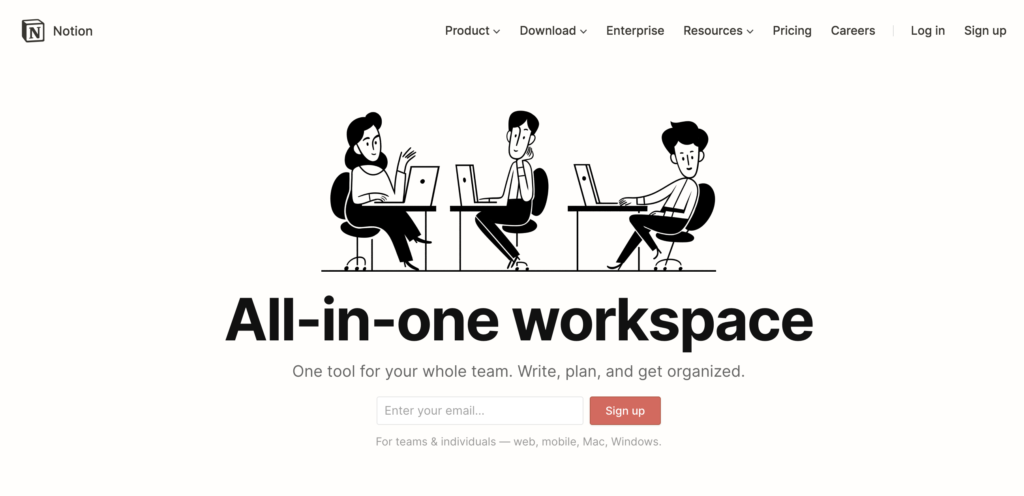
Notion, like mentioned before is another great tool to run your business. With Notion you can create a wiki and pages that serve as the "brain" of your business. It's a very robust tool to create processes and document how your company works.
9. Manage churn and focus on customer service
Churn is as a important as growth for service businesses.
With a high churn, your growth will start to
flatline and it will be difficult to keep up.
The first step to managing churn is to understand its cause.
Here are a few possible causes of churn for your design service:
- Client doesn't need your services anymore
- Client is unhappy with the design they received
- Client had unreasonable expectations
- Client is a wrong fit
- Bad customer service (slow to respond to messages, slow to onboard, etc)
Once you know the cause, it will be clearer what you need to improve in your business.
For example, if the
cause is unhappy with the design they received, improve the onboarding process and make sure designers / project
managers are following the exact instructions of the client brief. Make sure also the client knows they can switch
their designer (you can do that during the onboarding process too).
10. Focus on long-term growth
The next step of growth will be to focus on long term projects to grow your business.
This could be for
example:
- Hiring a Head of Operations
- Creating an affiliate program
- Setting up a sales team
- Improving your branding
- Setting up a long-term SEO plan
All of this will probably yield results on long term and allow you to create a valuable asset, that you can
potentially exit one day or manage only a few hours a week.
Wrapping up
Selling your design services in the form of subscription packages has teh potential to give you more
predictability and thus build a business that runs without you.
To start, niching down is key but down the
road your systems, and ability put a team together and use software to run your operations will be key to running
this model successfully.
If you're running this type of business, make sure to join our community and tell us what you're working on.
Running an agency?
ManyRequests is an all-in-one client portal and client requests management software.
Learn more